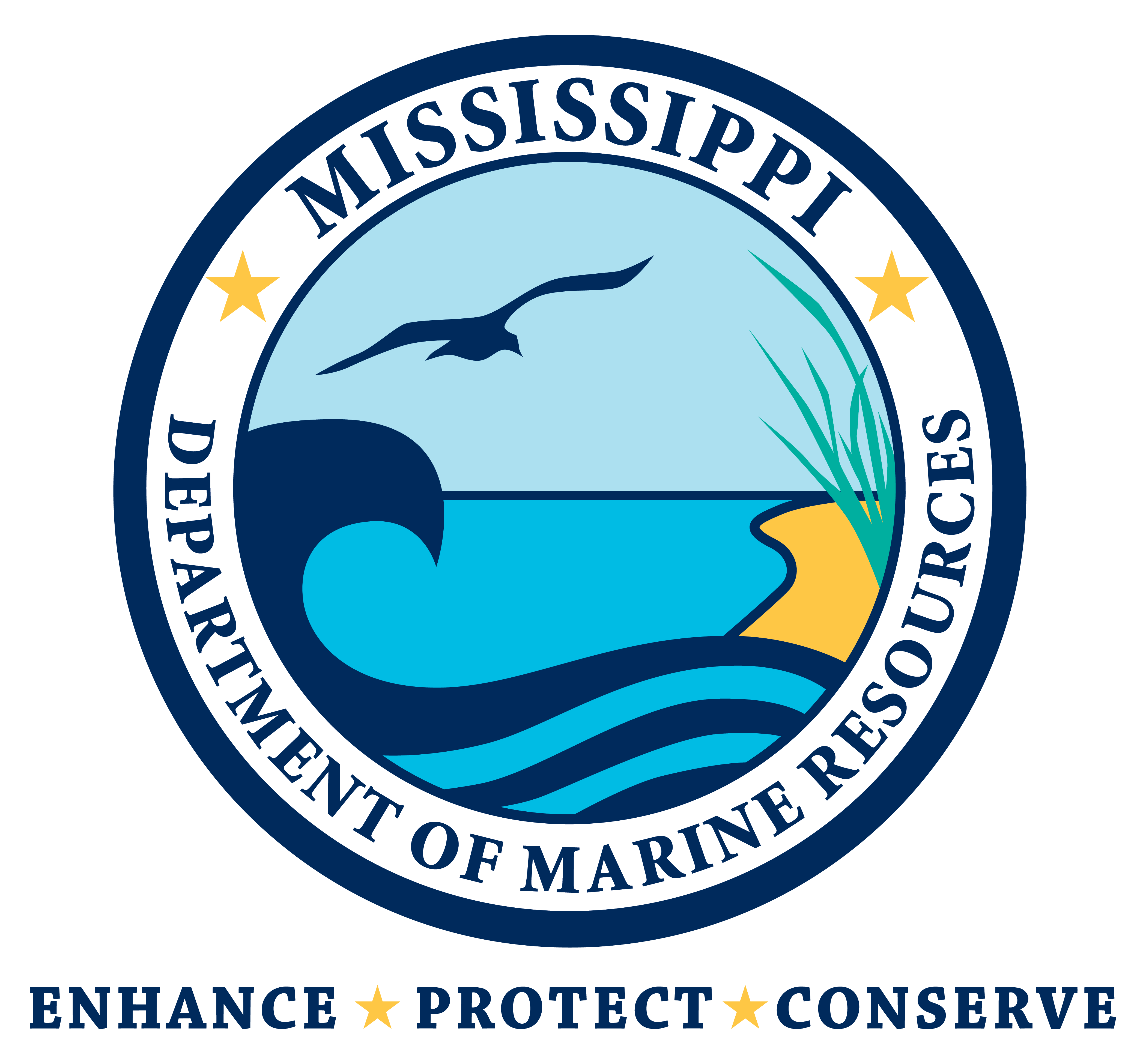Soooo much happened at the NERR this last month!
This month, like in April, we found plankton blooming in our SWMP Monitoring, which is normal for this time of year. We see this in our measurements of higher chl-a (chlorophyll-a) and TSS (total suspended solids). We also found very low salinities across the NERR estuaries, likely due to the large rain events we’ve been having up in the catchment.
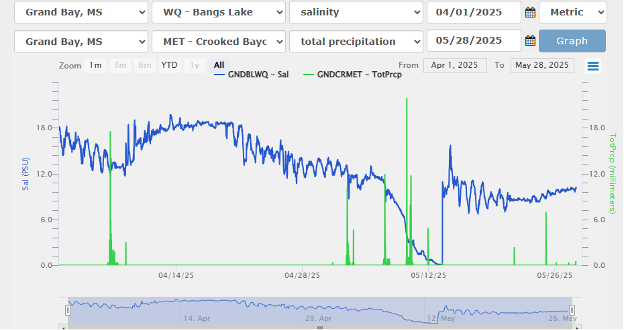
SWMP staff spent some time maintaining the MET station (Home | Centralized Data Management Office) in Crooked Bayou. We’ve also put a fake owl up to hopefully deter ospreys and other birds from using our rain gauge as a roosting spot!
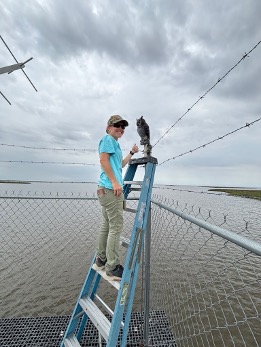
Each spring and fall we conduct plant surveys as part of a larger savanna restoration project. We hope to monitor these areas as restoration occurs, hoping to see the plant communities shift to what is indicative of good savanna habitat. During one of these surveys along our savanna trail north of the parking lot, we even spotted a male/female pair of Mississippi Sandhill Cranes! We’ve known through telemetry that they’ve passed through the area before, but had never actually laid eyes on them using these habitats, and what are the chances we would see them right at a veg plot while we’re surveying!
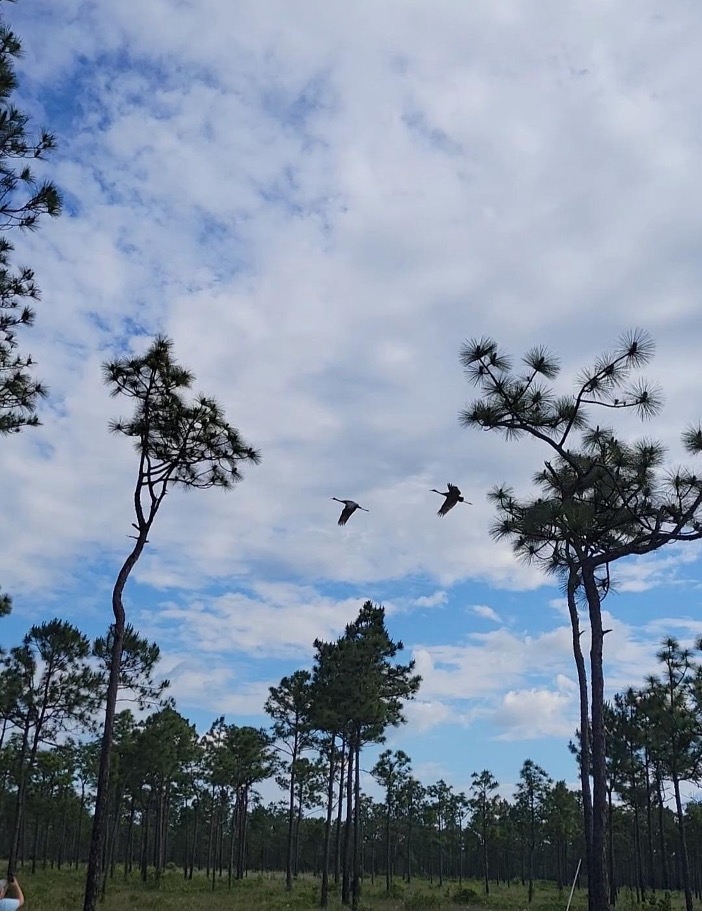
Speaking of restoration – three units at the Grand Bay NERR/NWR received prescribed burns this month! These include units where we’re maintaining existing good pine savanna habitats, and areas where fire is needed to restore historic savanna habitat.
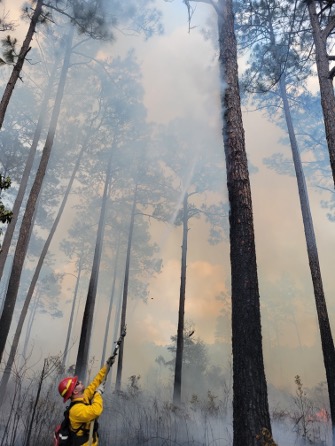
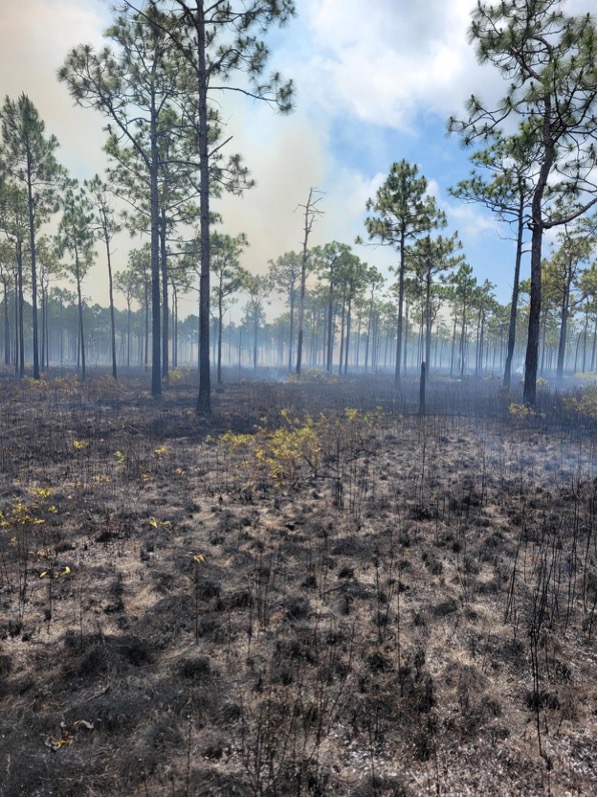
Also towards our goal of restoration, an invasive species workshop was held at the NERR after which staff and workshop attendees worked together to remove invasive Chinese tallow trees from a restoration unit that we hope will be the site of a future pollinator garden.
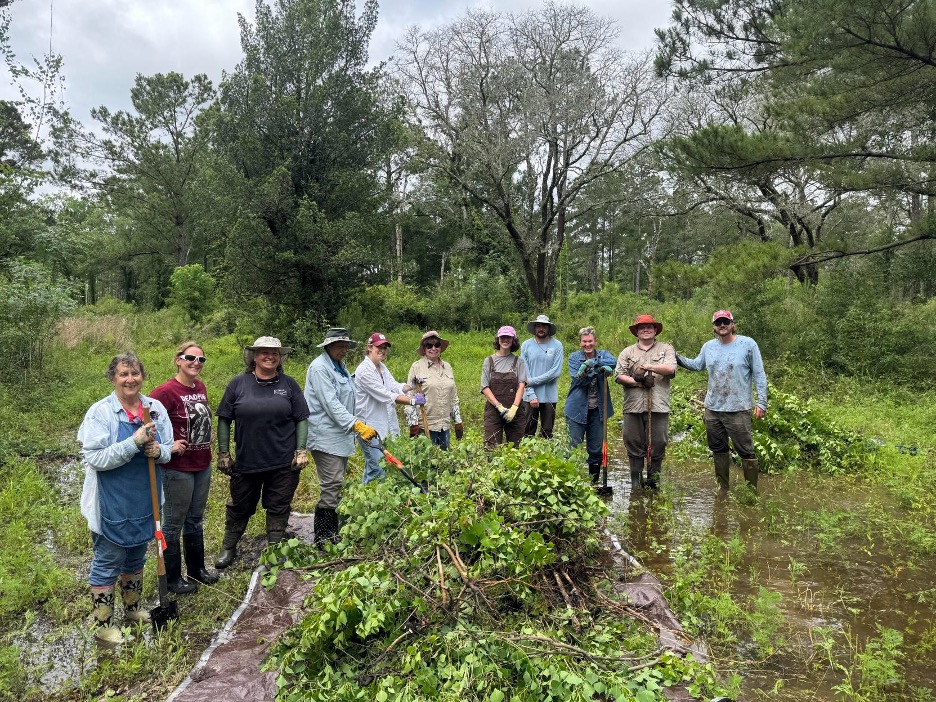
May is also the start of the nesting season for diamond-backed terrapins, our only brackish water turtle species. This season we are surveying for depredated nests along our marsh beaches, as these give us a minimum estimate of nesting activity. Next year we’re aiming to include some tagging and telemetry so we can better understand how our turtles are utilizing the estuary and what their home range might be.
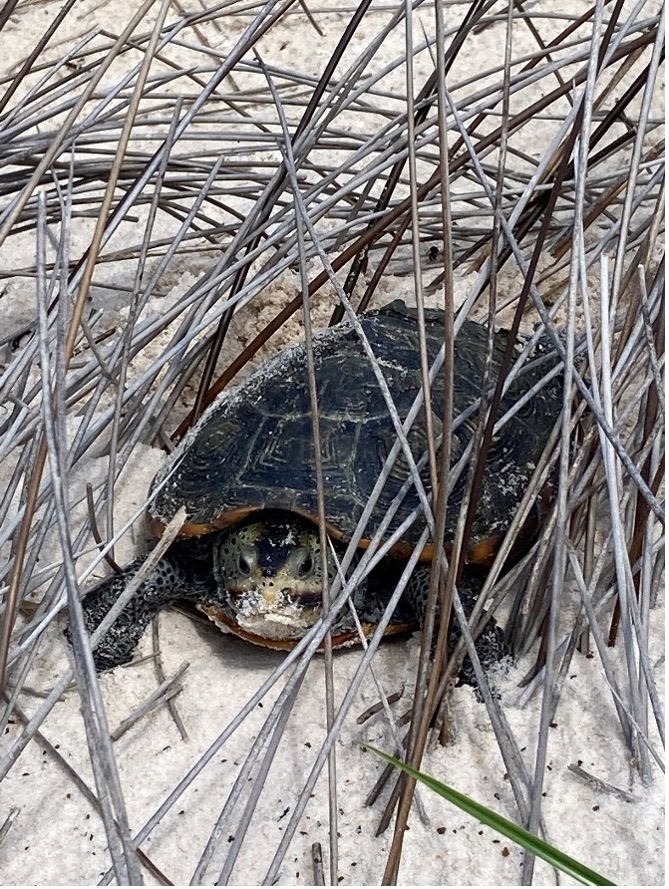
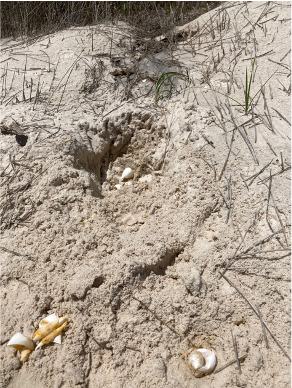
The Stewardship Team also observed the removal of a dredge pipe that had been impacting the marsh since Hurricane Sally first moved it back in 2020. This image shows the extensive damage that both the pipe and removal operations can inflict on the marsh, but we’re glad it’s finally gone so the marsh can repair itself!

We also conducted DMR’s fisheries survey (gill netting) in Point aux Chenes and found very low salinities (8 ppt!) and lots of small and large catfish, as well as menhaden. One fish we weren’t expecting was a beautiful tripletail (which we released alive)!
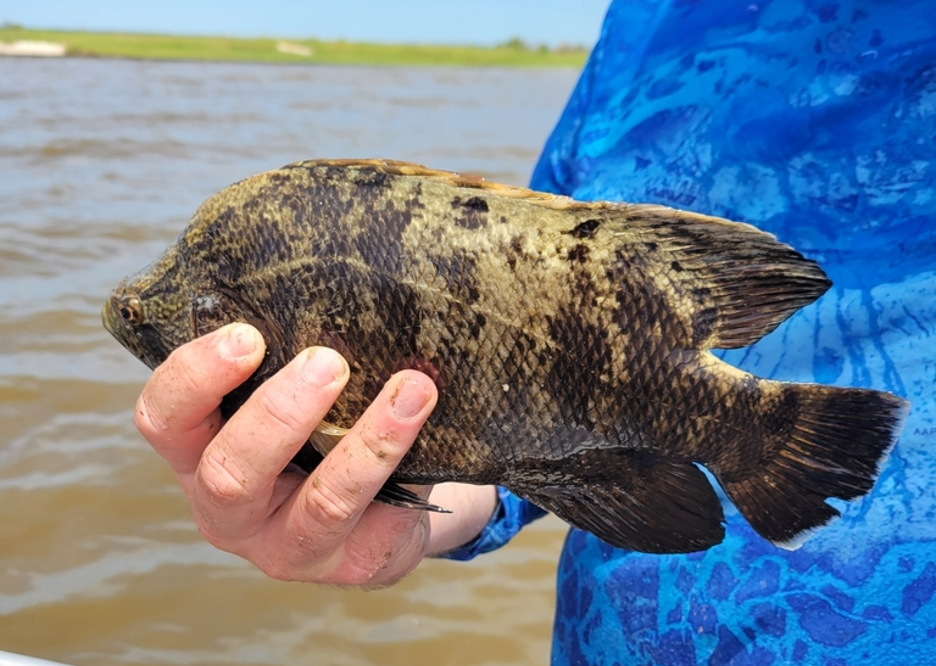
So much happened in May! Looking forward to all that will be happening in June! Stay tuned!
This blog post co-written by Jennifer DeBose and Andrew Heaton, Grand Bay NERR
